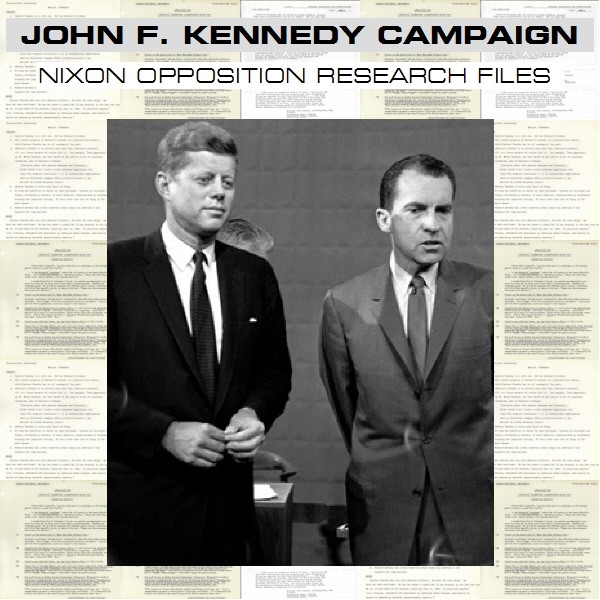
John F. Kennedy 1960 Presidential Election Campaign
$19.50
Description
1960 Election: Kennedy Campaign’s Nixon Research
Timeline of Main Events (as covered in the source)
Pre-1960:
- 1946-1960: Richard Nixon makes numerous public utterances during Congressional proceedings, speeches, press conferences, campaign events, and media interviews. These statements are compiled by the Democratic National Committee into “What Nixon Said: A Collection of his Public Utterances 1946 to 1960” (also known as the “Nixonpedpia”).
- 1947-1952: Richard Nixon serves as a member of the U.S. House of Representatives, accumulating a Congressional voting record.
- 1952: Dwight D. Eisenhower and Richard Nixon win the presidential election. Adlai Stevenson is their Democratic opponent. Nixon is accused by the Kennedy campaign of verbally attacking Stevenson during this period.
- 1953-1961: Richard Nixon serves as Vice President under President Dwight D. Eisenhower. In his role as President of the Senate, he casts eight tie-breaking votes.
- 1955: The Geneva Summit, an international conference, takes place.
- 1956: Dwight D. Eisenhower and Richard Nixon win re-election. The Kennedy campaign notes Nixon making promises on various topics (civil rights, agriculture, economy) during this campaign.
- 1960 (Pre-Election):The Democratic National Committee (DNC) creates “What Nixon Said” and presents it to the Kennedy Campaign.
- The Kennedy campaign and its surrogates compile extensive opposition research on Richard Nixon, drawing from various sources like the Congressional Record, Nixon’s speeches, media clippings, and campaign materials.
- The Kennedy campaign staff refers to “What Nixon Said” and its addendum as the “Nixonpedpia.”
- The Kennedy campaign creates a “Counterattack Source Book” to anticipate and counter negative attacks from the Nixon campaign and others.
- The Kennedy campaign compiles Vice President Nixon’s congressional voting record from 1947 to 1960.
- The Kennedy campaign gathers a folder titled “Nixon Promises,” documenting his past statements on key issues.
- The Kennedy campaign collects letters, newspaper clippings, and pamphlets supporting Nixon and opposing Kennedy, particularly focusing on the religious issue.
- The Kennedy campaign creates a binder indexing contradictory quotes made by Vice President Nixon.
- The Democratic National Committee (DNC) publishes bulletins titled “Correction, Please!” to address statements made by Richard Nixon during the campaign.
- The Kennedy campaign prepares briefing papers and memoranda for Senator Kennedy in anticipation of debates, including a transcript of the first Kennedy-Nixon debate.
- The U-2 incident, involving the use of U-2 aircraft for aerial surveillance over the Soviet Union, occurs. The 1960 Paris Summit, likely related to the fallout from this incident, takes place.
1960 Presidential Election Campaign:
- During the Campaign:The Kennedy campaign utilizes the compiled opposition research, including “What Nixon Said,” to inform their strategy and messaging.
- The Kennedy campaign focuses on a wide range of issues, analyzing Nixon’s past statements and record on topics such as the federal budget, civil liberties, civil rights, economic policy, education, role of government, internal security and communism, labor issues, natural resources, taxes, general welfare, national defense, national security, the draft, mutual security, national security (scientists and engineers), U-2, colonialism, economic aid, international relations, international conferences, Africa, Europe, Middle East, the 1952 presidential campaign, Joseph R. McCarthy and McCarthyism, smear tactics, and political attacks on Truman, Acheson, and Stevenson.
- The Kennedy campaign addresses Nixon’s past statements regarding being concerned about a political “war party” and his views on the Office of the Vice President.
- The religious issue (Kennedy being Catholic) is raised by Nixon supporters and documented by the Kennedy campaign.
- Senator John F. Kennedy and Vice President Richard M. Nixon participate in debates.
- The Kennedy campaign strategizes for the final nine days of the campaign.
- November 8, 1960: The United States presidential election takes place.
- Post-Election: John F. Kennedy and Lyndon Johnson win the presidential election with 49.7 percent of the popular vote against Richard Nixon and Henry Cabot Lodge, who receive 49.6 percent. The election is one of the most closely fought in American history.
Cast of Characters with Brief Bios
- John F. Kennedy: Democratic Senator from Massachusetts and the winner of the 1960 presidential election. His campaign actively conducted opposition research on Richard Nixon.
- Richard Nixon: Republican Vice President of the United States under President Dwight D. Eisenhower and the Republican nominee for President in 1960. His public statements and record from 1946 to 1960 were the subject of extensive scrutiny by the Kennedy campaign.
- Lyndon B. Johnson: Democratic Senator from Texas and John F. Kennedy’s running mate in the 1960 presidential election. He became Vice President after their victory.
- Henry Cabot Lodge: Republican politician who served as Richard Nixon’s running mate in the 1960 presidential election.
- Dwight D. Eisenhower: Republican President of the United States from 1953 to 1961. Richard Nixon served as his Vice President.
- Adlai Stevenson: Democratic Governor of Illinois who ran for President in 1952 and 1956, losing to Eisenhower/Nixon both times. He was the subject of past political attacks by Nixon, according to the Kennedy campaign’s research.
- Harry S. Truman: Democratic President of the United States from 1945 to 1953. He was also the subject of past political attacks by Nixon.
- Dean Acheson: Democratic Secretary of State under President Harry S. Truman. He was also a target of Nixon’s past criticisms, according to the source.
- Joseph R. McCarthy: Republican Senator from Wisconsin known for his anti-communist crusade in the early 1950s. His methods and the era of “McCarthyism” were topics of interest during the 1960 election
John F. Kennedy 1960 Presidential Election Campaign: Richard Nixon Opposition Research Papers
1,515 pages of open source research on Richard Nixon and documents demonstrating its use, compiled by the Kennedy campaign and its surrogates.
The United States presidential election of the 1960 was among the most closely fought in American history. On November 8, 1960, Senators John F. Kennedy and Majority Leader Lyndon Johnson won the presidential election with 49.7 percent of the popular vote against 49.6 percent for Vice President Richard Nixon and Henry Cabot Lodge.
The material collected in this research set includes files created or received by the Kennedy campaign derived from many sources including the Congressional Record, Nixon speeches, media clippings, and transcripts, and campaign materials. The material includes correspondence, memoranda, publications, press releases, documents regarding Vice President Richard M. Nixon’s campaign strategy and suggestions for defeating him in the 1960 presidential campaign.
The largest section in this set is the compilation, “What Nixon Said A Collection of his Public Utterances 1946 to 1960”. This cut and pasted, lose leaf 3 volume, 632 page compilation, along with its 80 page addendum is referred to as the “Nixonpedpia,” by the staff of John F. Kennedy Presidential Library and Museum, in Boston, Massachusetts. “What Nixon Said” (1946-1960) was created by the Democratic National Committee and presented to the Kennedy Campaign. It contains short, medium, and long quotations of statements made by Richard Nixon during Congressional proceedings, in speeches, press conferences, campaign material, newspaper, magazine, radio and television interviews. Each entry has a source citation.
The subjects include:
Federal budget, including the 1960 Republican Party platform, balancing the budget, and national defense spending.
Civil liberties, including censorship, congressional witnesses, and wiretapping.
Civil rights, including voting, desegregation of schools, the South, employment, and the Republican Party’s record on civil rights.
Economic policy, including domestic spending, inflation, unemployment, the economic record of the Democratic Party, and economic accomplishments of the Republican Party.
Education, including Federal aid to states, the Federal student loan program, and teachers’ salaries.
Role of government, including the Electoral College; federal, state, and local governments; nepotism; and the relationship between the President and Congress.
Internal security and communism, communists in government, education about communism, and the House Un-American Activities Committee.
Labor issues, such as strikes; labor-management relations; and legislation, including the Taft-Hartley bill.
Natural resources, including hydro-electric power and the water in California.
Taxes, tax cuts, and tax reform.
General welfare including government spending and social programs, including Social Security, public assistance, and health care for the aged.
National defense, including military strength, defense spending, and reorganization of the military.
National security including disarmament, relations between the United States and the Soviet Union, atomic energy, satellites, the missile gap, and nuclear testing.
The draft and universal military training.
Mutual security, including military assistance and the distribution of foreign aid.
National security: scientists and engineers, including the need for greater education in the science and engineering fields, and competition between the United States and Soviet Union.
U-2, the use of U-2 aircraft to conduct aerial surveillance over the Soviet Union.
Colonialism and its effect on communism, trade, and international relations.
Economic aid, foreign aid, and international relations.
International conferences, including the 1955 Geneva Summit and the 1960 Paris Summit.
Africa, and the creation of the Bureau of African Affairs within the United States Department of State.
Europe, United States policy towards European countries, particularly Germany, Hungary, and Poland.
Middle East, particularly Iran, Israel, and the Egyptian city of Suez.
1952 presidential campaign and candidate Governor Adlai Stevenson.
Wisconsin Senator Joseph R. McCarthy, and the culture of McCarthyism.
Smear tactics and other negative methods in campaigns.
Political campaigns and verbal attacks on President Harry S. Truman, Secretary of State Dean Acheson, and Governor Adlai Stevenson.
Nixon calling President Harry S. Truman, Secretary of State Dean Acheson, and Governor Adlai Stevenson traitors to the principles of the Democratic Party.
“War Party,” Nixon expressing concern about the existence of a political “war party” within the United States.
Nixon on the Office of the Vice President of the United States, including his own duties and responsibilities as Vice President under President Dwight D. Eisenhower.
Others subjects include: Agriculture, Antitrust, Corruption and Ethics in Government, Debt, Highways, Housing, Monetary Policy, Small Business, Socialism, Veterans, Foreign Service. Immigration, Neutrality, Trade, Tariffs, United Nations, Cabinet Appointments, Religion and Personal Philosophies and Observations.
Other Highlights include:
Counterattack Source Book – Contains information derived from memoranda, briefing papers, public statements, campaign literature and advertising, and position papers regarding issues often or potentially mentioned in opposition to the election of Senator Kennedy, raised by the Nixon 1960 presidential campaign, and others, along with potential responses. Compiled in this volume are many charges made against Kennedy followed by recommended replies and comparisons to Nixon.
Vice President Richard M. Nixon’s congressional voting record from 1947 to 1960 (As Vice President (1953 to 1961), Nixon in his role as President of the Senate, eight times casted a tie breaking vote in the Senate) collected by Senator John F. Kennedy’s 1960 presidential campaign.
A folder titled, “Nixon Promises,” containing statements made by Nixon and his position on various topics, such as civil rights, agriculture, and the economy, during the presidential campaigns of 1952 and 1956.
A folder containing letters, newspaper clippings, and pamphlets supporting Vice President Richard M. Nixon in the 1960 presidential election and opposing Senator John F. Kennedy based primarily on the religious issue.
A binder containing an index of contradictory quotes made by Vice President Richard M. Nixon on various topics. Also included are a record of his defense and foreign policies, international travels, and his Congressional voting record.
Copies of bulletins published by the Democratic National Committee (DNC) titled, “Correction, Please!” devoted to addressing the issues raised by Vice President Richard Nixon during the 1960 presidential campaign.
Folders containing briefing papers and memoranda providing background information and suggestions for Senator John F. Kennedy as he prepared for debates with his opponents during the 1960 presidential campaign. Materials include a memorandum regarding policies governing members of the press and a transcript of the first Kennedy-Nixon debate.
A memorandum concerning the last nine days of Senator John F. Kennedy’s 1960 presidential campaign.





Related products
-
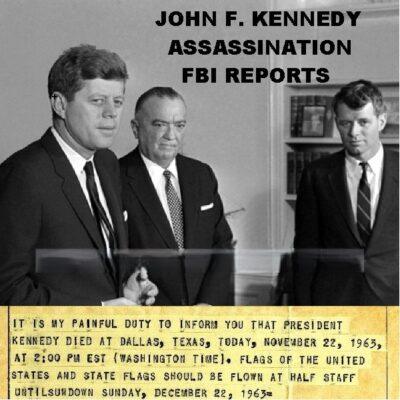
John F. Kennedy Assassination FBI Reports
$19.50 Add to Cart -
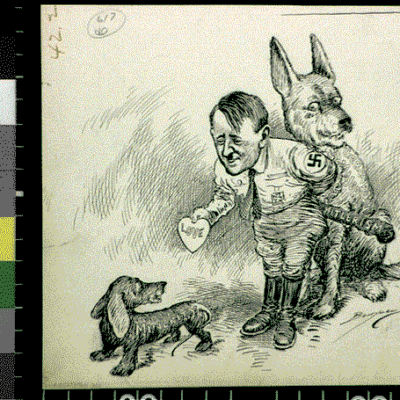
Clifford Berryman’s Political Cartoons from World War II
$19.50 Add to Cart -
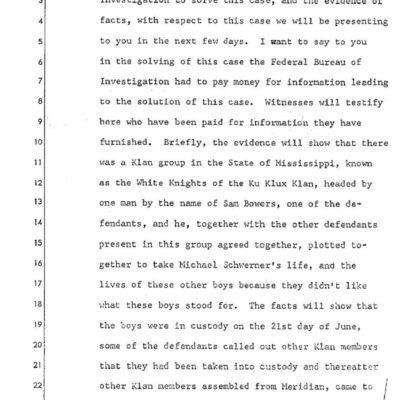
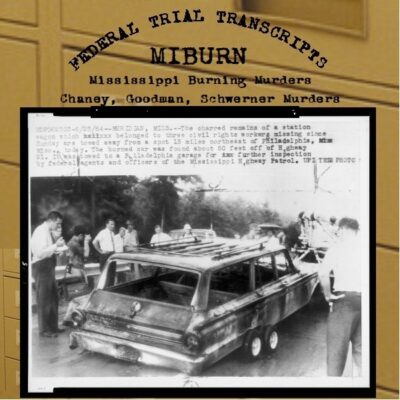
Mississippi Burning: Trial Transcripts of Civil Rights Workers’ Murders
$19.50 Add to Cart -
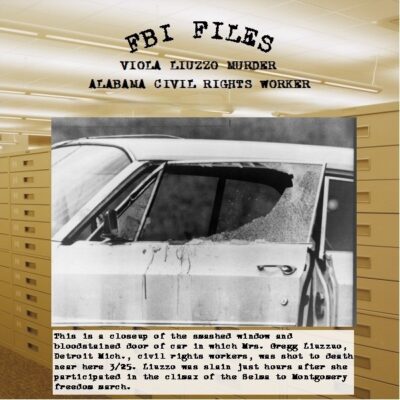
Viola Liuzzo Murder – Alabama KKK FBI Files – President Johnson Secret Phone Recordings
$19.50 Add to Cart